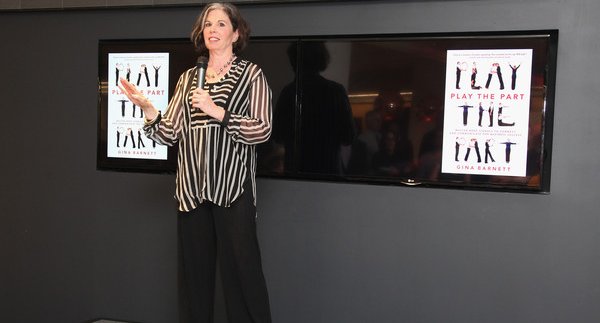by
_____
Yup, that’s exactly what one of Gina Barnett’s more resistant clients told her when they started working together: “I don’t give a sh*t how the brain works.”
He was so difficult, so defensive and unpleasant that Barnett, a speaking coach, wanted to back out of the gig. Barnett shared her client horror story – and her thoughts on the connection between speaker and audience – with the Leadership Communicators Roundtable this week.
Instead of backing out, she kept working with the client, focusing on his body language and the subtle messages he was unknowingly communicating.
As the weeks passed, their relationship shifted. Together they worked on his body movements and gestures, and she began to feel a connection with him. Eventually the warm feelings grew and he became one of her favorite clients.
“I came to love him,” she said.
Barnett is an expert at translating the subtle and unintentional signals that the body sends out. She says we often don’t know what our bodies are communicating to others while we stumble around in our brains trying to come up with language.

Embodiment means being in touch with the physical self and the frank truths we all share as human beings: fragility, vulnerability, and mortality.
Barnett has been a coach for the Main Stage TED Talks for the past 8 years, working behind the scenes with star speakers like Susan Cain, Chip Kidd, Kathryn Schulz, David Kelly, Atul Gawande, and Anthony Romero. She also coaches leaders in corporations, nonprofits and the arts.
“Everyone’s body is unique,” she writes. “Each has its own shape, motor skills, assets, limitations, perceptual skills, history, and memory. Every body tells a story.”
As for the mind, it’s “a rich tapestry of impulses, sensations, thoughts, reactions, memories, associations, perceptions, all in constant flux and flow.”
In sync, the mind and the body create embodiment, a powerful tool for communicators and leaders because it leads to awareness, commonality, and connection.
“We can use the body to hack the brain,” Barnett says, referring to the work of neuroscientist VS Ramachandran. A popular TED speaker, he researches the role of mirror neurons in mental capacities like empathy, imitation learning, and the evolution of language.
With physical movement and mental engagement, speakers can create what’s known as presence – “an evolving conception in others’ experiences of you, as well as your own self-conception.”
But creating presence on stage is a skill that requires awareness, focus, intention – and tenacity.
“Presence is not fixed,” says Barnett. “We are all works in progress.”
© Copyright 2017
________________________________
Want to talk? Reach me at dana@danarubin.com

